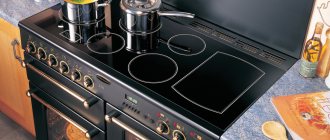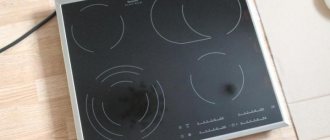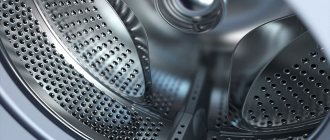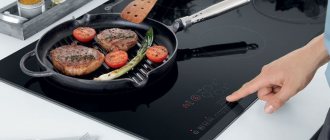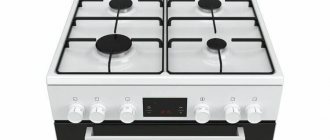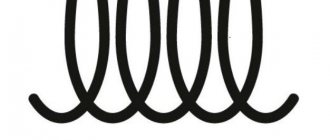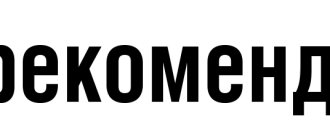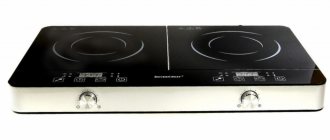Glass ceramic hob - what is it?
A stove whose hob is made of glass ceramics is called glass-ceramic. Glass ceramics are made from quartz sand using technological additives. Sand is melted at high temperature, auxiliary components are added to it, air bubbles are removed, and allowed to cool - glass ceramics are obtained. This composite material has properties that even tempered glass cannot boast of. These are strength and anisotropic thermal conductivity - the ability to transfer heat in one direction better than in another. Glass-ceramic stoves have pros and cons that must be taken into account when choosing a model for your kitchen.
How to choose a glass-ceramic stove?
Before purchasing, you should consider a number of features that glass-ceramic hobs are endowed with:
- Equipment . Separate hob or full-fledged stove with oven. This parameter is important even at the stage of planning the kitchen furnishings.
- Dimensions . The dimensions of the slab are selected relative to the countertop.
- Appearance . It should complement the kitchen decor and become a continuation of the furniture.
- Price . Significant factor. Typically, shoppers expect a certain price range when visiting a hardware store.
- Easy to care for . In this matter, glass-ceramic appliances cannot boast of ease. It will take considerable effort and meticulousness to keep the stove in order.
Be sure to study the connection type and programs installed in the stove. Perhaps there are significant inconsistencies with the communications available in the kitchen.
Advantages and disadvantages
The advantages of such plates are largely due to the properties of the glass-ceramic coating of the panel:
- Unique thermal conductivity: glass ceramics conduct heat better in the vertical direction than in the horizontal. The pan heats up more efficiently and the adjacent cooking surface remains cool.
- Low inertia: glass ceramics heats up quickly and cools down just as quickly. A decrease in the degree of heating is immediately reflected in the actual temperature of the burner. Previously, only gas stoves were distinguished by this. Another advantage is that a few minutes after preparation, you can touch the working surface with your hand.
- Surface durability: the material will withstand falling heavy pots. However, you shouldn’t take it for a test drive: a pinpoint impact with a sharp, heavy object will cause a crack.
- Selecting the desired heating zone: you can change both the heating area and its shape. The function is useful both for making coffee in a Turk and for stewing meat in a duck pot.
- Hob lock function. A certain combination of pressing the touch buttons makes the work surface inactive, which prevents the child from accidentally turning it on.
- Additional options in some models are automatic cooking modes and heating power reduction modes. The burner operates at maximum power for the specified time, and then reduces the heat to the set value. Suitable for dishes and products that require long-term cooking (boiled beef, meatballs, etc.). Significantly facilitates the cooking process without requiring constant presence in the kitchen.
- Modern appearance. The stylish hob will harmoniously fit into the interior. In addition, it looks much more attractive than conventional electric or gas stoves.
Flaws:
- Capricious to care for. The glass-ceramic coating can only be washed with special products without abrasive particles. It’s better to immediately forget about metal brushes and sponges.
- Requires suitable utensils. The bottom should be flat and suitable in diameter to the burner.
- Troublesome to use. Glass ceramics are destroyed by melted plastic, aluminum foil, and stuck sugar. These substances must be removed immediately. Also, after cooking, it is necessary to remove any dirt, otherwise the stove will “please” with stains and changes in the color of the coating.
- Price. It is usually much higher than that of electric stoves with cast iron or spiral burners.
Glass ceramic hob: pros and cons
Before choosing and buying your favorite model of glass-ceramic stove or hob, it is useful to learn about its advantages and disadvantages.
Advantages of glass-ceramic plates
- The heating elements in a glass-ceramic stove heat up and cool down faster than standard electric stove pancakes. Since glass ceramics conduct heat vertically, the bottom of the pan warms up first. On such a stove you can boil two liters of water in 2-3 minutes, which significantly speeds up the cooking process and provides significant energy savings;
- Glass ceramics heats up and cools down quickly, which allows you to dynamically regulate the degree of heating. Previously, this was only available for gas stoves.
- Changing the heating zone. It is possible to adjust the heated area, which allows you to use dishes with different bottom diameters and different shapes (you can use ducklings and goose bowls, vessels of various configurations).
- The glass-ceramic stove is easy to clean because it is flat and even;
- The burners of the glass-ceramic stove do not require replacement;
- Ease of Management. Modern models have a built-in touch panel, which creates maximum convenience when using the stove. Just a couple of touches are enough to turn on and set the desired mode.
- A glass-ceramic hob looks “more interesting” in the interior than a regular electric one;
- You can place dishes of different diameters on a flat surface. The burner changes both size and shape.
Disadvantages of glass-ceramic stoves
- Requires cookware with a smooth, flat bottom. Inscriptions and embossed images are not allowed on the outer surface of the bottom of the cookware.
- The glass-ceramic stove can only be washed with special compounds. It is forbidden to clean it with abrasive materials, because it will be scratched and lose its properties.
- Glass ceramics are sensitive to damage. The condition of the surface of a glass-ceramic stove is adversely affected by aluminum, plastic and even ordinary sugar. Glass ceramics can withstand a lot of weight, but will not withstand a targeted blow from a sharp object.
- You can place pots of different temperatures with wet or dry walls on a regular gas or electric stove. But this is not suitable for glass-ceramic surfaces. Splashing cold water onto a hot stove can damage it.
- Glass-ceramic stoves are usually more expensive than conventional electric stoves with the same set of functions.
What kind of cookware should I use?
Manufacturers of glass ceramics advise choosing pans with a double, perfectly flat bottom. Chips and raised inscriptions are not allowed: they can damage the coating.
It is highly not recommended to cook in dishes made of aluminum and copper: they leave stains that are difficult to remove. Ceramic or glass containers are also not suitable.
On glass-ceramic stoves with induction heating, the same cookware is used with one addition: a magnet must “stick” to the bottom of the pan.
To determine whether a container is suitable, read the manufacturer's instructions regarding its suitability for a particular surface.
Types of cookers
All glass-ceramic hobs have a glass-ceramic work surface in common. However, the types of heating elements under the hob vary. By type of heat source, devices are classified into:
- electrical;
- induction;
- gas.
The operating principle of electric and gas stoves is similar: temperature is transferred from the heat source to the panel, then to the cookware.
The operation of an induction cooker is different: the induction current heats the cookware directly, bypassing the panel. This gives rise to a number of main advantages of induction cookers:
- safety – the surface of the table is heated only by the pan, so the neighboring areas are relatively cool. It is difficult to get burned by a non-hot surface even with a strong desire. In addition, the boiled-off broth will not burn, as on the hot surface of a gas stove;
- energy efficiency. Now there is no need to select the diameter of the dishes: the pan is heated directly, unlike conventional electric stoves, where the entire heating element is heated, despite the smaller diameter of the container. Electricity is used sparingly.
All stoves, the hob of which is made of glass ceramics, compare favorably with their outdated predecessors.
Induction glass-ceramic hobs have more advantages, however, the final decision is up to you.
What to consider when choosing a model?
To choose the ideal option for you, you should keep in mind some criteria:
- Connection type. It is difficult to use a gas stove in a house where there is no centralized gas supply.
- Functionality: Having a lock, automatic shut-off, electric grill and other useful extras makes life easier, but also increases the cost.
- Equipment - with or without oven? Free-standing or built-in? Answer these questions, keeping in mind that the built-in kit will cost more.
- Hob type – classic burner or glass ceramic. If you've used hotplates before, maybe you should try something new? Of course, modern coatings impose certain maintenance requirements, but this is just a matter of habit.
- Dimensions. An appliance that is too large for your kitchen will become annoying over time.
- Easy to care for. Modern ovens are equipped with a cleaning system using the pyrolysis method: contaminants burn out under high temperature. What more could you ask for? Touch control of the table, as opposed to buttons and knobs, will facilitate manual cleaning.
- It's a question of price. Think about whether in everyday life you need all the additional functions of an expensive stove or can you get by with a budget option with a simple set of options?
- Appearance. The device should be pleasing to the eye and harmonize with the kitchen furniture, because housewives spend so much time in the kitchen.
By taking the above nuances into account, you reduce the risk of a useless purchase. All you need to do is choose a model!
Recommended Models
Below is a list of models that are optimal in price, quality and functionality. They are arranged in descending order of cost and connected options.
GEFEST 6560-03 0001
Cost from 24.4 thousand rubles, dimensions (hereinafter WxDxH) 600x600x850 mm. There are four electric burners, two of which are dual-circuit. Power 7.8 kW, warranty 24 months. Manufacturer – Belarus. Includes kebab maker, electric spit, electric grill, convection. Double oven lighting will provide complete control over the cooking process. A multifunctional electronic timer is both a clock and an alarm clock, and will even turn on (if we are talking about a delayed start) and turn off the oven after cooking. Residual heat indicator, blocking the inclusion of burners - as a matter of course. Control the table using a sensor, control the oven using rotating knobs and a timer. It is impossible to remain silent about the stylish design of this model. The glass facade with a marble pattern can delight even the most skeptical guest. Available in brown and black.
BEKO CSE 57300 GA
Price from 20.4 thousand rubles, dimensions 500x600x850 mm. Four burners, one of which is dual-circuit. Residual heat indicator, electric grill. Power 7.8 kW, 2 year warranty. Country of manufacture: Türkiye. Convection will distribute the temperature in the oven evenly, and the electric grill will bake the chicken with a crispy crust - everyone at home will ask for more! A nice addition will be a display indicating the cooking time and a timer that changes the tone of the sound signal. Includes a drawer for storing utensils. There is no burner lock. Residual heat indicators will help you use electricity sparingly - this temperature is enough for the dish to reach culinary readiness. A nice bonus of this stove is the color of the body. Strict anthracite can revive even the simplest kitchen set. And the dirt on it is less visible.
Hansa FCCX54100
Price from 19,950 rubles, dimensions 500x600x850 mm. Four burners for quick heating, residual heat indicator, electric grill. Power 7.8 kW, 1 year warranty. Made in Poland. Higher power burners will allow you to cook a dish in less time. There is no control panel lock. The oven is equipped with lighting, maximum heating up to 260 degrees. Double glass in the oven door will protect against burns - heat is not transferred to the outer glass. There is a mechanical timer with a signal mute function.
DARINA 1B EC331 606 W
Cost from 12.7 thousand rubles, dimensions 500x560x850 mm. Three burners, residual heat indicator, control lock function. Power 6.6 kW, 2 year warranty. Manufacturer – Russia. It is unusual that the hob has 3 burners, however, according to consumers, this is quite enough. The form of heating does not change for either one. The residual heat indicator illuminates the heating zone while it is operating or cooling down. The light will go off when the temperature of the working area drops to a safe temperature. There is no timer. There is a utility compartment with a folding door. Attractive appearance: the combination of a white body and black glass ceramics both on the worktop and on the oven door will delight any unassuming housewife.
Induction panels
Here are two options for those who do not need an oven.
Iplate YZ-C20
The Iplate YZ-C20 induction cooker is universal: it can be used both as a stand-alone device and as a built-in panel. Equipped with two burners. Small dimensions of 600x360x75 mm and low weight of 4.9 kg allow you to move it freely and even remove it from the kitchen if it is not needed in the near future. Power 3.1 kW. Manufactured by the Russian company Iplate, 3-year warranty. The cost ranges from 8445 to 10207 rubles. The huge advantage of this stove is its fast heating, as well as safety: the magnetic field heats the dishes, not the working surface of the table. This reduces the risk of burns. The stove turns off automatically if you remove the pan from the surface, as well as when empty dishes are detected. The heating will not turn on if you forget to put the borscht on the stove. Two timers and displays make it convenient to control each burner separately. Touch controls are locked to prevent accidental activation.
Kitfort KT-104
The cheaper model of the Kitfort KT-104 induction cooker also has two burners. Dimensions (600x360x65 mm), weight and absence of an oven are similar to the previous model. The power of this model is greater - 4 kW. Price range from 6120 to 8470 rubles. Kitfort is a Russian company whose production facilities are located in China. This partly explains the attractive price of the products and the shorter warranty period - 1 year. Seven preset programs allow you to find an individual approach to each dish (soup, milk, frying, roast, etc.). Built-in overheating protection will prevent glass ceramics from deteriorating from excessive exposure to high temperatures. The automation will also turn off the stove after 2 hours of inactivity. As with the previous sample, you can select the power and heating temperature. Push-button control of two panels gives even more comfort in handling the stove.
A glass-ceramic stove can be a useful acquisition if you are ready to provide it with proper care - washing the hob after each cooking. Does this prospect depress you? Then it might be better to consider purchasing a classic hob. Whatever stove the consumer chooses, the main thing is that it must correspond to individual preferences and financial capabilities!
About glass ceramics
Home 4 main advantages of glass ceramics
Glass ceramics is an innovative material that, thanks to its unique properties, is the embodiment of a modern lifestyle focused on convenience and stylish design. Due to its functional properties, glass ceramics are ideal for fireplaces, stoves, ovens, barbecues, and for inspection windows in production. This material is usually called heat-resistant glass, but in reality it is transparent ceramic with a slight amber tint (its special composition makes it permeable to thermal infrared radiation and visible light). Glass ceramics combines such remarkable qualities as the heat resistance of ceramics, the transparency of glass, high resistance to sudden temperature changes, and high mechanical strength. This is why glass-ceramics are increasingly being used in wood-burning stoves, gas fireplaces, electric heaters, and in high-temperature applications. Modern, highly efficient furnaces produce intense heat. Regular tempered glass can withstand temperatures up to about 250°C, but in hotter temperatures such glass can crack or even burst and crumble, which means additional costs for glass replacement (not to mention safety!). Thanks to the latest technology, there is now an alternative! Glass ceramics can withstand temperatures up to 700°C for a long time (almost 3 times higher than the heat resistance of tempered glass!) , as it has an extremely low coefficient of thermal expansion. The material does not “flow”, and characteristic odors do not appear, as would be the case when using other glass. Glass ceramic will not break under normal use in wood stoves or gas fireplaces. Moreover, glass ceramics are highly resistant to sudden temperature changes. All this makes the use of fire-resistant glass an ideal solution for fireplaces and wood-burning stoves, where the glass doors can be located less than 15 cm from the fire. Glass ceramics have all the advantages to be considered a real “temperature miracle” - due to its extremely low coefficient of thermal expansion, such glass does not damaged:
1. at extremely high temperatures, 2. at significant temperature changes, 3. at uneven heating with a large temperature difference in different parts of the glass. And another undoubted advantage of glass ceramics is the ability to transmit heat almost without loss, which is especially important when using it in fireplace doors.
The use of heat-resistant glass for over 20 years has proven that it is a safe and reliable glazing material for space heating devices such as fireplaces and stoves. You can safely enjoy the cozy warmth and mesmerizing view of dancing flames, while being protected from flying sparks. By adjusting the amount of incoming air, you can control the intensity of combustion and make the most of the generated heat.

